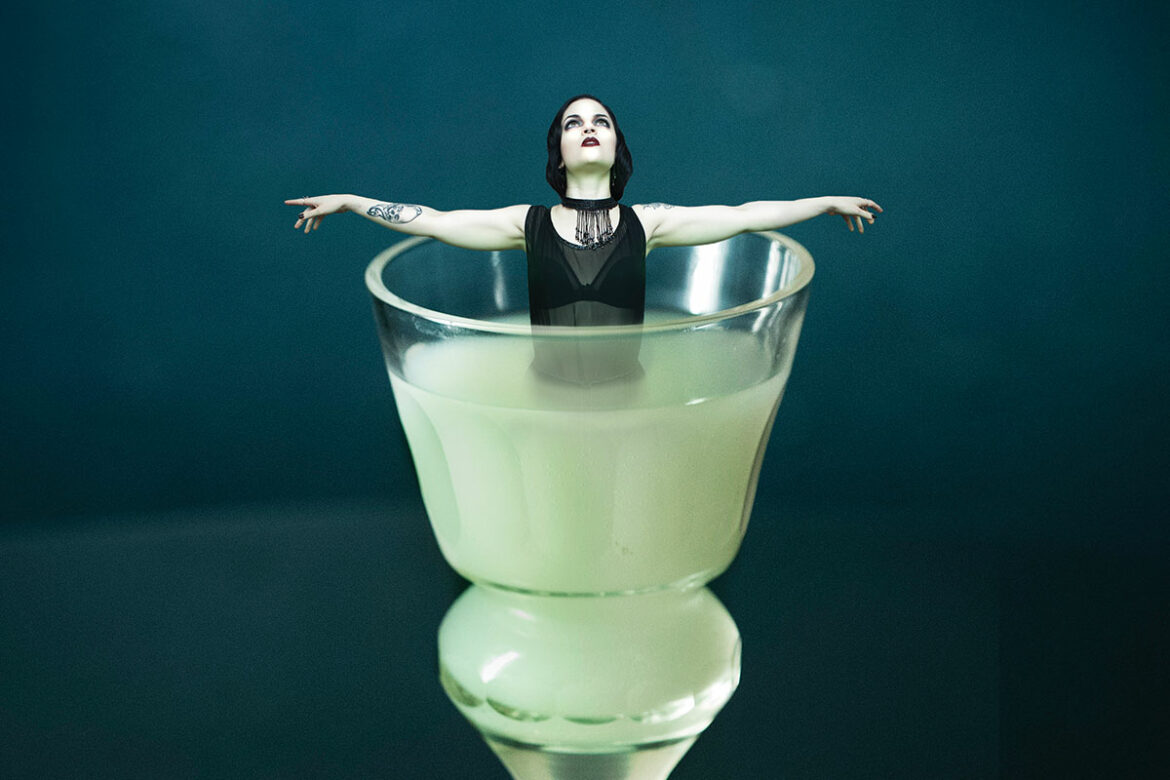Absinthe’s Rise, Fall, and its Catskills Resurrection
THEN: The Rise & Fall
Whiskey has a pretty strong mystique—I’m thinking of a whiskey-soaked Charles Bukowski allowing the thing that he loves to kill him. Gin? Sure—there’s a heady scent of juniper and doom haunting Dorothy Parker and Zelda Fitzgerald. But neither can compete with the mystique of absinthe.
As a spirit, it’s not even particularly unique; absinthe shares its signature ingredients with many other liquors. Most notable of these is wormwood, a bitter herb used for millennia as an anthelmintic (that is, to battle intestinal parasites). Hippocrates, Pliny the Elder, and Pythagoras all touted wormwood’s effects. Campari and Fernet both contain wormwood, and it is the foundational ingredient in vermouth—vermis is Latin for worm. Wormwood does contain thujone, a chemical found to be a convulsant if consumed in massive quantities, but a drinker would be long dead of alcohol poisoning before consuming toxic levels of thujone via absinthe—and, besides, thujone also occurs in sage, oregano, and some junipers.
Beyond wormwood, absinthe’s pronounced licorice flavor comes from anise and fennel, which are also used in Pernod and Pastis, not to mention Turkish raki, Greek ouzo, and Italian sambuca and anisette. Beyond that trinity—wormwood, anise, and fennel—absinthe contains other harmless botanicals (hyssop, star anise, or lemon balm) proprietary to each distiller.
“A population accustomed to 24 proof wine was wildly receptive to the intoxication power of 90 to 148 proof absinthe.”
Absinthe will not make you high, and it won’t cause you to hallucinate, either. Disappointing, but modern science has determined that absinthe is as safe to consume as any other spirit—in fact the United States finally lifted its dusty 1912 ban on absinthe in 2007 (more on this below). That said, absinthe is HIGHLY alcoholic, with ABVs ranging from 45–74%, making absinthe 90–148 proof. This is where all of absinthe’s lovely accoutrements come into play; absinthe, like Pernod and Pastis, is traditionally mixed with water prior to drinking. When water is added, the clear absinthe turns a cloudy, opal green—this is known as the “absinthe louche,” or releasing “the green fairy.”
Poetic, but it’s just that terpenes from anise and fennel are soluble in alcohol, but not water. Once you dilute the absinthe with water, those terpenes go from being in clear solution to being in a cloudy suspension: Pastis also goes cloudy with added water. To release the absinthe fairy, though, some drinkers balance a slotted, blade-like spoon topped with a sugar cube across the rim of a glass filled with absinthe, then slowly pour cool water over the spoon—watching as the clear liquid magically turns opaque. In the late 19th century, absinthe fontaines became common in bars and bistros; these took the tedium out of pour-over service. Instead, water slowly dripped from an ornate reservoir through multiple spigots into glasses. Seated at tables, tipplers watched their drinks become inhabited by fairies.
Locally Louche
Delaware Phoenix Distillery
Walton, NY
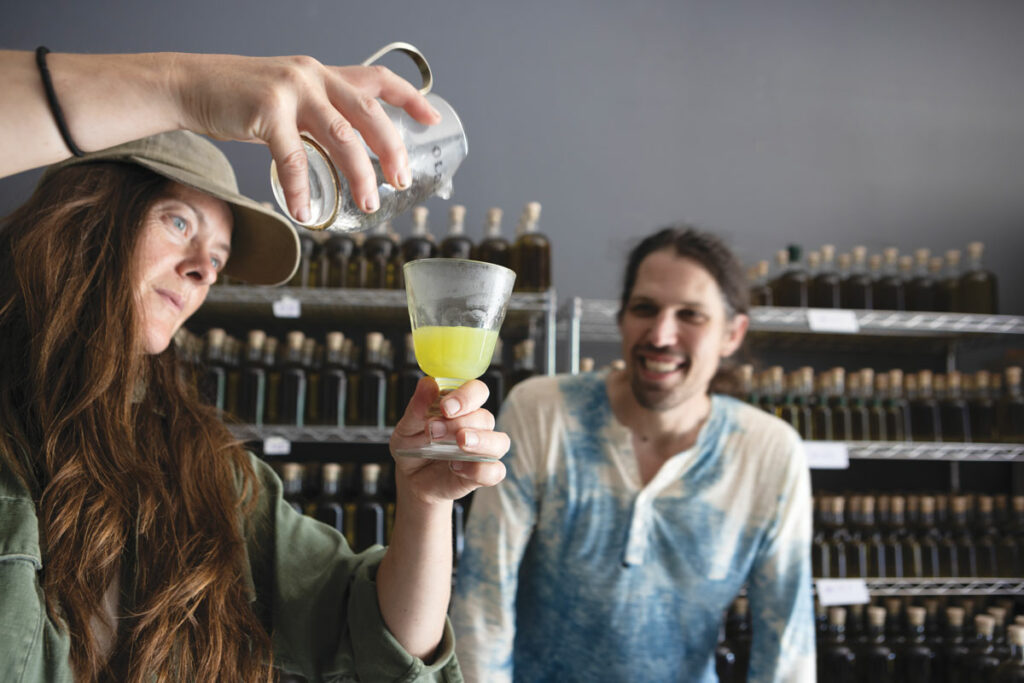
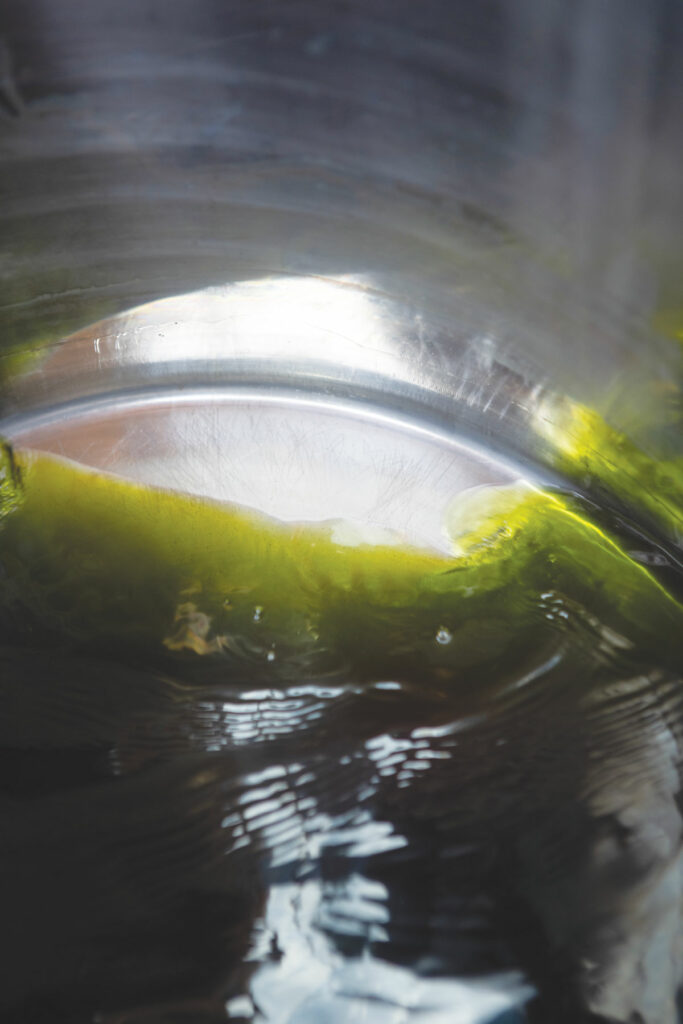
The original Swiss recipe for making absinthe called for eau de vie, which, in the 18th century, was the handiest (and cheapest) source of high octane, potable alcohol. Then, it was common to distill spirits from the ferments of fruit and other crops: pears, cherries, raspberries, quince, even carrots or the tender buds of fir trees. This practice had several advantages. Namely, it extracted and preserved value from short-lived seasonal bounties, but also, eau de vies were used as medicine, as was, originally, whiskey (a word anglicized from the Gaelic uisge beatha, or “water of life”).
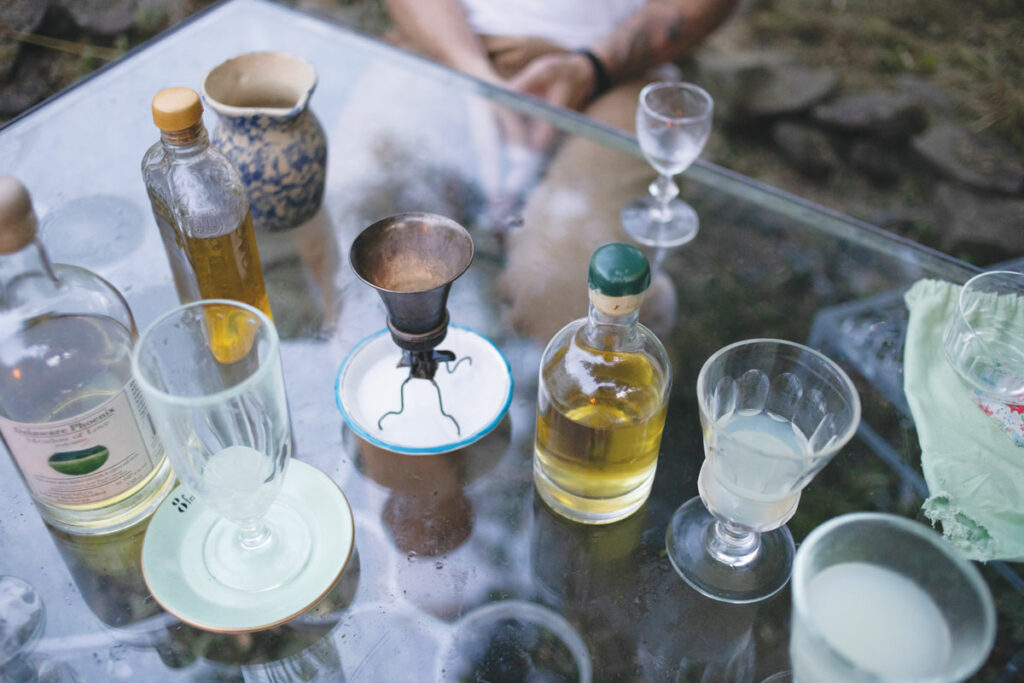
These days, there’s no point in using craft made eau de vie to make absinthe. The intensely flavored ingredients used in absinthe would overwhelm whatever subtle fragrances remain from an eau de vie’s fruit of origin. Instead, modern absinthe makers use grain neutral spirit. Delaware Phoenix, which bears a class-D Farm Distillery License, is required to source 75% of its ingredients in New York State. They use corn-based, carbon-filtered grain neutral spirit produced by ClearSource in Medina, NY, and a partially grape-based neutral spirit distilled by Cayuga Ingredients in the Finger Lakes.
Just as the early 18th century Gin Craze wreaked havoc in England when a new, cheap, highly intoxicating spirit began to supplant 3–5% ABV ale as the people’s quaff (until the government reacted by imposing punishing gin taxes and licensing fees), so did France experience an absinthe craze. In the 1840s, French soldiers deployed to colonize Algeria were given absinthe to ward off malaria—unfortunate, because, unlike tonic water made with quinine, absinthe has no antimalarial properties. When those soldiers returned to France, they brought with them their passion for absinthe, a recipe for which, handily, had been codified by a Swiss physician in 1792. Prior to that, absinthe had been made by Swiss farmers to use as family (and, potentially, veterinary) medicine. Like gin during the Gin Craze, absinthe was not magical, sinister, or hallucinogenic; the trouble was that a population accustomed to 24 proof wine was wildly receptive to the intoxication power of 90–148 proof absinthe.
That interest was partly economic. Between 1863 and 1890, the insect pest phylloxera devastated French vineyards, causing scarcity and inflated prices in wines and France’s grape-based spirits, cognac and Armagnac. Comparatively, and like crack cocaine and opioids (and gin in the 1720s), absinthe was cheap, easily accessible, and highly intoxicating.
“Together, all caused the clutching of pearls across Europe and as far as the U.S.”
Which brings us to the art. In late 19th century France, there emerged a group of radical artists who eschewed the accepted, Royal Academy–type subject matter: say, royal portraiture or scenes from the Bible or Greek mythology. Instead, artists like Degas (with his backstage scenes of flushed, sweaty ballet troupes) and Toulouse-Lautrec (with his judgement-free depiction of prostitutes) painted figures from the working and under classes. These paintings featured streets, brothels, theaters, and bars, and many—including Manet’s The Absinthe Drinker (1858–9), Van Gogh’s Café Table with Absinthe (1887), and Picasso’s The Absinthe Drinker (1901)—depicted, if not centered, absinthe.
Simultaneously, the Decadent movement in France and England united a coterie of literary figures—Charles Baudelaire, Paul Verlaine, Arthur Rimbaud, Oscar Wilde—who championed arts freed from didactic or moralizing overlays: l’art pour l’art, or art for art’s sake. These influential voices challenged traditional values regarding sex, class, religion, art, beauty, and ethics, plus (like their contemporaries in the visual arts), they were strongly associated with absinthe. Together, all caused the clutching of pearls across Europe and as far as the U.S.—after all, that noted American creeper Edgar Allan Poe was an absinthe devotee.
Popular media fanned absinthe’s risqué reputation, with novelist Marie Corelli writing in 1890, “Let me be mad, then, by all means! Mad with the madness of Absinthe, the wildest, most luxurious madness in the world! Vive la folie! Vive l’amour! Vive l’animalisme! Vive le Diable!” Given a growing association with addiction and moral laxity, it’s no surprise that absinthe drew critics in France—but, also, absinthe use had become linked to insanity. Some of that could be attributed to poorly made, adulterated—or even poisonous—bathtub absinthes being sold on France’s unregulated market.
Yet there were also physicians looking into absinthe’s effects. Valentin Magnan, physician-in-chief of France’s primary lunatic asylum, Sainte-Anne, coined the term absinthism—citing a new, violent form of insanity (characterized by hallucinations and seizures) that was distinct from delirium tremens in alcoholics. The turning point came in 1905 when absinthe was blamed for a notorious murder committed by a French laborer living in Switzerland who killed his pregnant wife and two children under its influence. Switzerland banned absinthe in 1908, then the Netherlands banned it in 1909, while Belgium had already banned it in 1905. France, which consumed more absinthe than any nation, banned it in 1915. Of course, the U.S. had long been home to influential temperance movements that would successfully foment the 18th Amendment (Prohibition) in 1919. Given absinthe’s reputation, and the nascent power of the American temperance movement, it was a no-brainer for the U.S. to ban absinthe in 1912. And there it stayed until 2007.
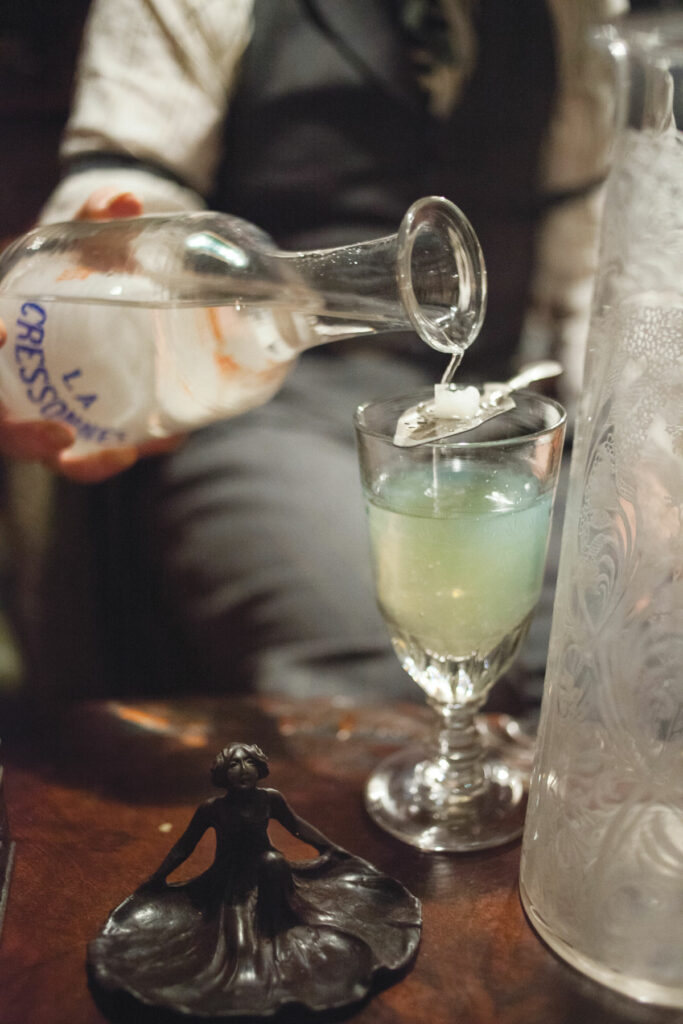
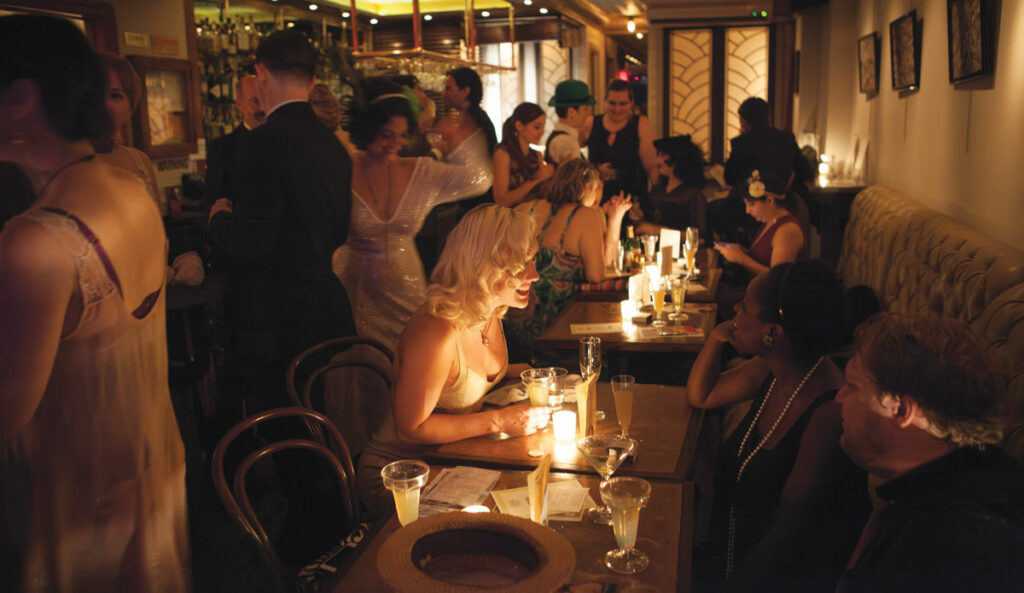
NOW: The Resurrection
In 2009, after the Farm Distillery Act (of 2005) revived spirit-making in New York State, and the national ban on absinthe production was lifted, Chery Lins—a programmer who helped develop the first Apple computers and whose code helped sequence the Human-Genome project—opened Delaware Phoenix Distillery in Walton, NY. Not only was Lins New York State’s first female distillery owner, but also, she was the state’s first absinthe maker—though more recently, Stoutridge Distillery & Winery in Marboro launched their own series of absinthes. The three craft-distilled absinthes that Lins made (Meadow of Love, Walton Waters, and Blues Cat) soon appeared in shops and behind bars, drawing praise from spirit publications while Lins earned glowing profiles in The New York Times and Edible Manhattan. Tragically, Lins died of a sudden heart attack in 2021; today, Delaware Phoenix is run by Tianna Kennedy and Ryan Jahn, life partners who began working with Lins as far back as 2011.
“The biggest hurdle nowadays is that people still think it makes you trip.”
While Jahn acknowledges that absinthe’s spooky mystique draws some drinkers, it’s a reputation that has been exploited. Absinthe’s widespread banning encouraged some European distillers—say, in Poland or the Czech Republic—to sell cheap, artificially colored absinthes to tourists visiting from countries where the ban was still in place. Says Jahn, “The biggest hurdle nowadays is that people still think it rots your brains and makes you trip. How many generations need to pass before absinthe doesn’t conjure memories of being 19 and throwing up all over a park bench in Prague?” Its reputation for danger also disguises absinthe’s fundamental drinkability: properly diluted with water in a 4 or 5:1 ratio, absinthe is between 22 and 27 proof—or, about as strong as wine.
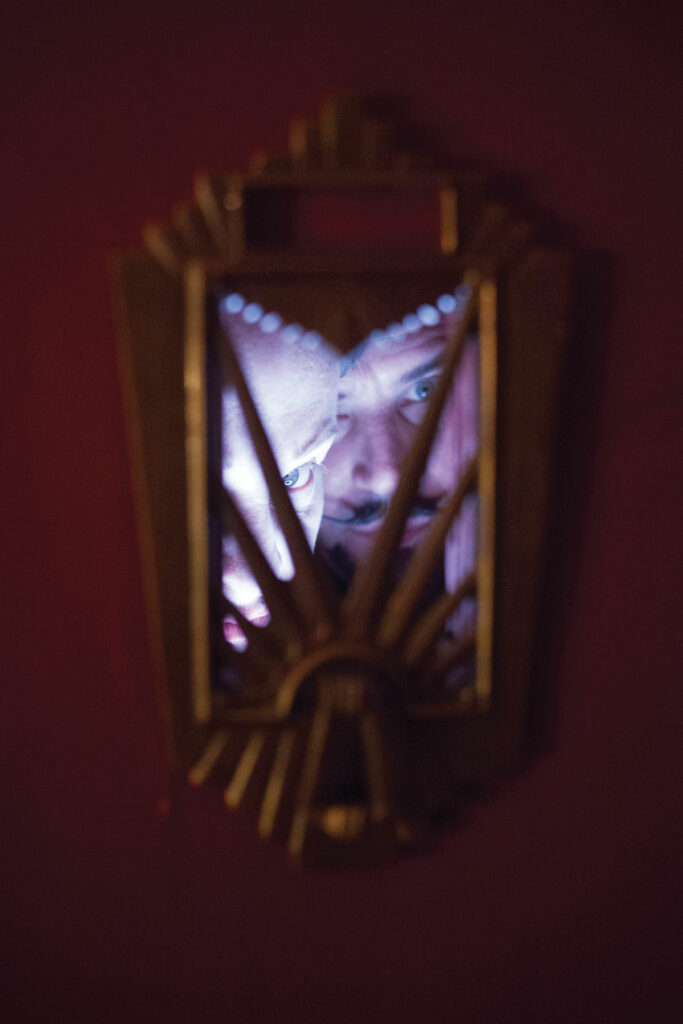
Kennedy and Jahn would like to expand the understanding of absinthe beyond fontaines, Van Gogh, and France’s 19th century craze, back to when farmers made medicinal absinthes from herbs and locally distilled eau de vies. Says Jahn, “There was no pomp and circumstances. They were just making this beautiful beverage for themselves and as a dewormer for their cows.” Those rustic origins jibe with how Kennedy and Jahn became involved in Delaware Phoenix. Thirteen years ago, Lins asked Kennedy, a farmer at Lucky Dog Farm, to grow some of her botanicals. Says Kennedy, “Our entry point is farming, and we care about agriculture in this region. But also, Cheryl was a purist, and would say, ‘No, you do not need the sugar cubes. You do not need the fire. You do not need that stuff: You just drink it.’”
While they use locally sourced, grain neutral spirit in lieu of Alpine eau de vies, the process of making Delaware Phoenix absinthe—serially distilling and infusing their spirit with locally raised botanicals—is faithful to its agricultural origins. “What we’re trying to resurrect,” says Jahn, “is the idea of absinthe as a craft beverage very similar to wine. Because when you think of a winery, or a vineyard, you think of a peaceful, atmospheric, soft environment.” You could be thinking of Walton, New York.


